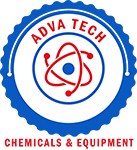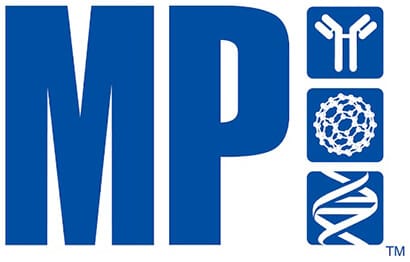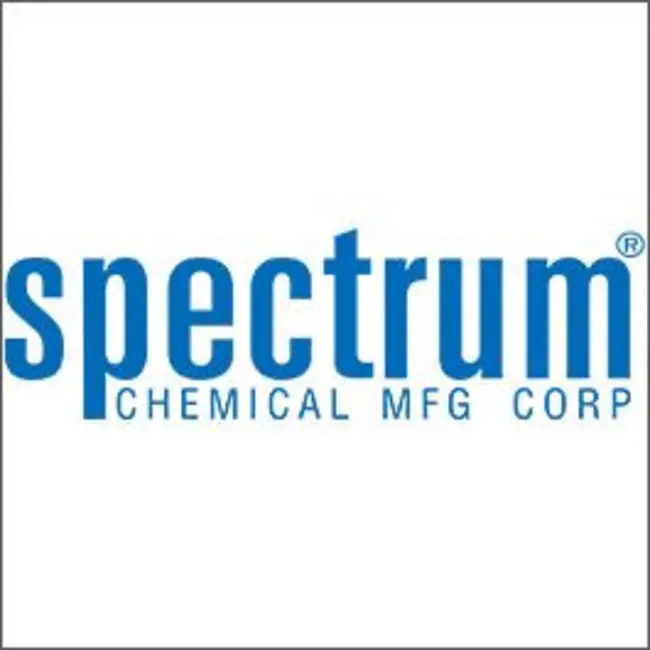GenScript Biotech
Showing 901–950 of 2554 results
-
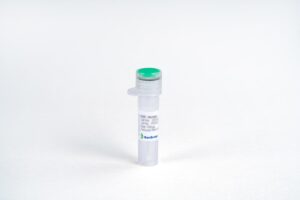
FGF-basic, Mouse
$86.25 Add to cart View Product DetailsFibroblast Growth Factor-basic (FGF-basic), also known as HBGF-2, is a non-glycosylated heparin-binding growth factor that belongs to the FGF family. FGF-basic is present in basement membranes and in the subendothelial extracellular matrix of blood vessels. FGF-basic signals through FGFR1, 2, 3 and 4 that plays an important role in the regulation of cell survival, cell division, angiogenesis, cell differentiation and cell migration.
-

FGF-basic, Mouse
$612.38 Add to cart View Product DetailsFibroblast Growth Factor-basic (FGF-basic), also known as HBGF-2, is a non-glycosylated heparin-binding growth factor that belongs to the FGF family. FGF-basic is present in basement membranes and in the subendothelial extracellular matrix of blood vessels. FGF-basic signals through FGFR1, 2, 3 and 4 that plays an important role in the regulation of cell survival, cell division, angiogenesis, cell differentiation and cell migration.
-
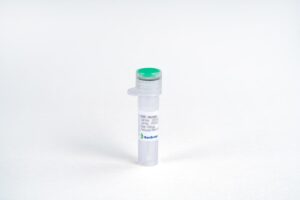
FGF-basic, Rat
$612.38 Add to cart View Product DetailsFibroblast Growth Factor-basic (FGF-basic), also known as FGF-2, is a pleiotropic cytokine and one of the prototypic members of the heparin-binding FGF family. Like other FGF family members, FGF-basic has the β trefoil structure. In vivo, FGF-basic is produced by a variety of cells, including cardiomycotes, fibroblasts, and vascular cells. FGF-basic regulates a variety of processes including cell proliferation, differentiation, survival, adhesion, motility, apoptosis, limb formation and wound healing. FGF-basic can be tumorigenic due to its role in angiogenesis and blood vessel remodeling. The angiogenic effects of FGF-basic can produce beneficial cardioprotection during acute heart injury.
-

FGF-basic, Rat
$43.13 Add to cart View Product DetailsFibroblast Growth Factor-basic (FGF-basic), also known as FGF-2, is a pleiotropic cytokine and one of the prototypic members of the heparin-binding FGF family. Like other FGF family members, FGF-basic has the β trefoil structure. In vivo, FGF-basic is produced by a variety of cells, including cardiomycotes, fibroblasts, and vascular cells. FGF-basic regulates a variety of processes including cell proliferation, differentiation, survival, adhesion, motility, apoptosis, limb formation and wound healing. FGF-basic can be tumorigenic due to its role in angiogenesis and blood vessel remodeling. The angiogenic effects of FGF-basic can produce beneficial cardioprotection during acute heart injury.
-

FGF-basic, Rat
$86.25 Add to cart View Product DetailsFibroblast Growth Factor-basic (FGF-basic), also known as FGF-2, is a pleiotropic cytokine and one of the prototypic members of the heparin-binding FGF family. Like other FGF family members, FGF-basic has the β trefoil structure. In vivo, FGF-basic is produced by a variety of cells, including cardiomycotes, fibroblasts, and vascular cells. FGF-basic regulates a variety of processes including cell proliferation, differentiation, survival, adhesion, motility, apoptosis, limb formation and wound healing. FGF-basic can be tumorigenic due to its role in angiogenesis and blood vessel remodeling. The angiogenic effects of FGF-basic can produce beneficial cardioprotection during acute heart injury.
-
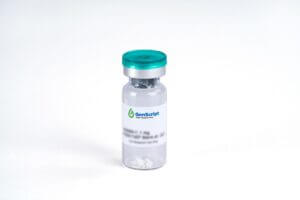
FGF-basic, Salmon
$1,138.50 Add to cart View Product DetailsFibroblast Growth Factor-basic (FGF-basic), also known as FGF-2, is a pleiotropic cytokine and one of the prototypic members of the heparin-binding FGF family. Like other FGF family members, FGF-basic has the β trefoil structure. In vivo, FGF-basic is produced by a variety of cells, including cardiomyocytes, fibroblasts, and vascular cells. FGF-basic regulates a variety of processes including cell proliferation, differentiation, survival, adhesion, motility, apoptosis, limb formation and wound healing. FGF-basic can be tumorigenic due to its role in angiogenesis and blood vessel remodeling. The angiogenic effects of FGF-basic can produce beneficial cardioprotection during acute heart injury.
-
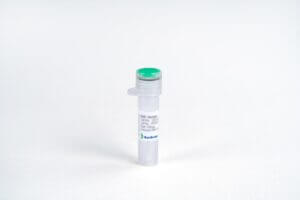
FGF-basic, Salmon
$63.83 Add to cart View Product DetailsFibroblast Growth Factor-basic (FGF-basic), also known as FGF-2, is a pleiotropic cytokine and one of the prototypic members of the heparin-binding FGF family. Like other FGF family members, FGF-basic has the β trefoil structure. In vivo, FGF-basic is produced by a variety of cells, including cardiomyocytes, fibroblasts, and vascular cells. FGF-basic regulates a variety of processes including cell proliferation, differentiation, survival, adhesion, motility, apoptosis, limb formation and wound healing. FGF-basic can be tumorigenic due to its role in angiogenesis and blood vessel remodeling. The angiogenic effects of FGF-basic can produce beneficial cardioprotection during acute heart injury.
-

FGF-basic, Salmon
$232.88 Add to cart View Product DetailsFibroblast Growth Factor-basic (FGF-basic), also known as FGF-2, is a pleiotropic cytokine and one of the prototypic members of the heparin-binding FGF family. Like other FGF family members, FGF-basic has the β trefoil structure. In vivo, FGF-basic is produced by a variety of cells, including cardiomyocytes, fibroblasts, and vascular cells. FGF-basic regulates a variety of processes including cell proliferation, differentiation, survival, adhesion, motility, apoptosis, limb formation and wound healing. FGF-basic can be tumorigenic due to its role in angiogenesis and blood vessel remodeling. The angiogenic effects of FGF-basic can produce beneficial cardioprotection during acute heart injury.
-
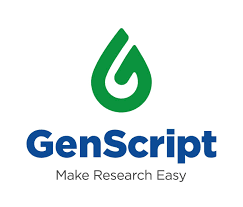
FGF-R2β Fc Chimera, Mouse
$1,293.75 Add to cart View Product DetailsFibroblast growth factor receptor 2 (FGFR2) also known as CD332 is a receptor for fibroblast growth factor and it has important roles in embryonic development and tissue repair, especially bone and blood vessels. FGFR2 has two naturally occurring isoforms, FGFR2IIIb and FGFR2IIIc, created by splicing of the third immunoglobulin-like domain. FGFR2IIIb is predominantly found in ectoderm derived tissues and endothelial organ lining. Like the other members of the fibroblast growth factor receptor family, these receptors signal by binding to their ligand and dimerisation (pairing of receptors), which causes the tyrosine kinase domains to initiate a cascade of intracellular signals. On a molecular level these signals mediate cell division, growth and differentiation.
-

FGF-R2β Fc Chimera, Mouse
$189.75 Add to cart View Product DetailsFibroblast growth factor receptor 2 (FGFR2) also known as CD332 is a receptor for fibroblast growth factor and it has important roles in embryonic development and tissue repair, especially bone and blood vessels. FGFR2 has two naturally occurring isoforms, FGFR2IIIb and FGFR2IIIc, created by splicing of the third immunoglobulin-like domain. FGFR2IIIb is predominantly found in ectoderm derived tissues and endothelial organ lining. Like the other members of the fibroblast growth factor receptor family, these receptors signal by binding to their ligand and dimerisation (pairing of receptors), which causes the tyrosine kinase domains to initiate a cascade of intracellular signals. On a molecular level these signals mediate cell division, growth and differentiation.
-

FGF-R2β Fc Chimera, Mouse
$137.14 Add to cart View Product DetailsFibroblast growth factor receptor 2 (FGFR2) also known as CD332 is a receptor for fibroblast growth factor and it has important roles in embryonic development and tissue repair, especially bone and blood vessels. FGFR2 has two naturally occurring isoforms, FGFR2IIIb and FGFR2IIIc, created by splicing of the third immunoglobulin-like domain. FGFR2IIIb is predominantly found in ectoderm derived tissues and endothelial organ lining. Like the other members of the fibroblast growth factor receptor family, these receptors signal by binding to their ligand and dimerisation (pairing of receptors), which causes the tyrosine kinase domains to initiate a cascade of intracellular signals. On a molecular level these signals mediate cell division, growth and differentiation.
-

FGF-R3(ⅢC) Fc Chimera, Mouse
$1,293.75 Add to cart View Product DetailsFibroblast growth factor receptor 3(FGFR3) also known as CD333 (cluster of differentiation 333) is a member of the fibroblast growth factor receptor family, where amino acid sequence is highly conserved between members and throughout evolution. The FGFR3 gene produces various forms of the FGFR3 protein and the location varies depending on the isoform of the FGFR3 protein. Since the different forms are found within different tissues, the protein is responsible for multiple growth factor interactions. Gain of function mutations in FGFR3 inhibits chondrocyte proliferation and underlies achondroplasia and hypochondroplasia.
-

FGF-R3(ⅢC) Fc Chimera, Mouse
$137.14 Add to cart View Product DetailsFibroblast growth factor receptor 3(FGFR3) also known as CD333 (cluster of differentiation 333) is a member of the fibroblast growth factor receptor family, where amino acid sequence is highly conserved between members and throughout evolution. The FGFR3 gene produces various forms of the FGFR3 protein and the location varies depending on the isoform of the FGFR3 protein. Since the different forms are found within different tissues, the protein is responsible for multiple growth factor interactions. Gain of function mutations in FGFR3 inhibits chondrocyte proliferation and underlies achondroplasia and hypochondroplasia.
-

FGF-R4 Fc Chimera, Mouse
$1,293.75 Add to cart View Product DetailsFibroblast growth factor receptor 4(FGFR4) also known as CD334 (cluster of differentiation 334) is a member of the fibroblast growth factor receptor family, where amino acid sequence is highly conserved between members and throughout evolution. A full-length representative protein would consist of an extracellular region, composed of three immunoglobulin-like domains, a single hydrophobic membrane-spanning segment and a cytoplasmic tyrosine kinase domain. The extracellular portion of the protein interacts with fibroblast growth factors, setting in motion a cascade of downstream signals, ultimately influencing mitogenesis and differentiation.
-

FGF-R4 Fc Chimera, Mouse
$189.75 Add to cart View Product DetailsFibroblast growth factor receptor 4(FGFR4) also known as CD334 (cluster of differentiation 334) is a member of the fibroblast growth factor receptor family, where amino acid sequence is highly conserved between members and throughout evolution. A full-length representative protein would consist of an extracellular region, composed of three immunoglobulin-like domains, a single hydrophobic membrane-spanning segment and a cytoplasmic tyrosine kinase domain. The extracellular portion of the protein interacts with fibroblast growth factors, setting in motion a cascade of downstream signals, ultimately influencing mitogenesis and differentiation.
-

FGL1 Fc Chimera, Human
$1,293.75 Add to cart View Product DetailsFGL1 (Fibrinogen-like protein 1), also known as hepatocyte-derived fibrinogen-related protein 1 (HFREP-1), HP-041, hepassocin (HPS), and liver fibrinogen-related protein 1 (LFIRE-1), is a liver-specific secreted protein belonging to the fibrinogen superfamily whose members share a fibrinogen domain at their C-termini. FGL1 is an immune suppressive molecule that inhibits the activation of antigen-specific T cells by acting as a major ligand of LAG3, and binds LAG3 independently of MHC class II.
-

FGL1 Fc Chimera, Human
$189.75 Add to cart View Product DetailsFGL1 (Fibrinogen-like protein 1), also known as hepatocyte-derived fibrinogen-related protein 1 (HFREP-1), HP-041, hepassocin (HPS), and liver fibrinogen-related protein 1 (LFIRE-1), is a liver-specific secreted protein belonging to the fibrinogen superfamily whose members share a fibrinogen domain at their C-termini. FGL1 is an immune suppressive molecule that inhibits the activation of antigen-specific T cells by acting as a major ligand of LAG3, and binds LAG3 independently of MHC class II.
-

FGL1 Fc Chimera, Human
$137.14 Add to cart View Product DetailsFGL1 (Fibrinogen-like protein 1), also known as hepatocyte-derived fibrinogen-related protein 1 (HFREP-1), HP-041, hepassocin (HPS), and liver fibrinogen-related protein 1 (LFIRE-1), is a liver-specific secreted protein belonging to the fibrinogen superfamily whose members share a fibrinogen domain at their C-termini. FGL1 is an immune suppressive molecule that inhibits the activation of antigen-specific T cells by acting as a major ligand of LAG3, and binds LAG3 independently of MHC class II.
-

FITC-Protein L
$120.75 Add to cart View Product DetailsProtein L is a cell surface protein from Peptostreptoccocus magnus that binds to the variable light chains (kappa chain) of immunoglobulins without interfering with antigen binding. In contrast to IgG-binding proteins, such as protein A and protein G, which bind to the Fc region of immunoglobulins, protein L can be used for the detection and purification of mammalian kappa light chain antibodies of all classes. Since no part of the heavy chain is involved in the binding interaction, Protein L binds a wider range of antibody classes than Protein A or G. Protein L binds to representatives of all antibody classes, including IgG, IgM, IgA, IgE and IgD. Single chain variable fragments (scFv) and Fab fragments also bind to Protein L.
-

FITC-Protein L
$87.98 Add to cart View Product DetailsProtein L is a cell surface protein from Peptostreptoccocus magnus that binds to the variable light chains (kappa chain) of immunoglobulins without interfering with antigen binding. In contrast to IgG-binding proteins, such as protein A and protein G, which bind to the Fc region of immunoglobulins, protein L can be used for the detection and purification of mammalian kappa light chain antibodies of all classes. Since no part of the heavy chain is involved in the binding interaction, Protein L binds a wider range of antibody classes than Protein A or G. Protein L binds to representatives of all antibody classes, including IgG, IgM, IgA, IgE and IgD. Single chain variable fragments (scFv) and Fab fragments also bind to Protein L.
-

Flt-3L, His, Mouse
$94.88 Add to cart View Product DetailsFlt3L, also known as Fms-related tyrosine kinase 3 ligand and SL cytokine, is a single-pass type I membrane protein. It is expressed by stromal cells and T cells. Flt3L signals through tyrosine kinase receptor Flt3/Flk2 to stimulate the proliferation of early hematopoietic progenitor cells. It synergizes with other growth factors, such as GM-CSF, IL-3 and CSF, to promote the differentiation of both myeloid and lymphoid cells. Alternative splicing and proteolytic cleavage of membrane-bound Flt3L generates a soluble extracellular domain (ECD) isoform with full biological activity.
-

Flt-3L, His, Mouse
$224.25 Add to cart View Product DetailsFlt3L, also known as Fms-related tyrosine kinase 3 ligand and SL cytokine, is a single-pass type I membrane protein. It is expressed by stromal cells and T cells. Flt3L signals through tyrosine kinase receptor Flt3/Flk2 to stimulate the proliferation of early hematopoietic progenitor cells. It synergizes with other growth factors, such as GM-CSF, IL-3 and CSF, to promote the differentiation of both myeloid and lymphoid cells. Alternative splicing and proteolytic cleavage of membrane-bound Flt3L generates a soluble extracellular domain (ECD) isoform with full biological activity.
-

Flt-3L, Human
$1,410.19 Add to cart View Product DetailsFms-related tyrosine kinase 3 ligand (Flt3L) is growth fator stimulates the proliferation and differentiation of hematopoietic multipotent progenitors and promotes proliferation of NK cells and dendritic cell subgroups by combination with other growth factors. Flt3L is produced by T cells and stromal fibroblasts, and targeted various cells including hematopoietic stem cells, B cells, T cells, dendritic cells, and NK cells. Flt3L binds to it cognate tyrosine kinase receptor Flt3 and activates JAK/STAT signaling pathway.Flt3L is a hematopoietic four helical bundle cytokine with structurally homologous to stem cell factor (SCF) and colony stimulating facor 1 (CSF-1) demonstrated four conserved cysteines and two glycosylation sites. Flt3L naturally as a non-disulfide-linked homodimer with multiple isoforms. The extracellular portion is approximately 160 amino acid residues in length and the cytoplasmic segment is approximately 20-30 amino acid residues in length.
-

Flt-3L, Human
$86.25 Add to cart View Product DetailsFms-related tyrosine kinase 3 ligand (Flt3L) is growth fator stimulates the proliferation and differentiation of hematopoietic multipotent progenitors and promotes proliferation of NK cells and dendritic cell subgroups by combination with other growth factors. Flt3L is produced by T cells and stromal fibroblasts, and targeted various cells including hematopoietic stem cells, B cells, T cells, dendritic cells, and NK cells. Flt3L binds to it cognate tyrosine kinase receptor Flt3 and activates JAK/STAT signaling pathway.Flt3L is a hematopoietic four helical bundle cytokine with structurally homologous to stem cell factor (SCF) and colony stimulating facor 1 (CSF-1) demonstrated four conserved cysteines and two glycosylation sites. Flt3L naturally as a non-disulfide-linked homodimer with multiple isoforms. The extracellular portion is approximately 160 amino acid residues in length and the cytoplasmic segment is approximately 20-30 amino acid residues in length.
-

Flt-3L, Human
$224.25 Add to cart View Product DetailsFms-related tyrosine kinase 3 ligand (Flt3L) is growth fator stimulates the proliferation and differentiation of hematopoietic multipotent progenitors and promotes proliferation of NK cells and dendritic cell subgroups by combination with other growth factors. Flt3L is produced by T cells and stromal fibroblasts, and targeted various cells including hematopoietic stem cells, B cells, T cells, dendritic cells, and NK cells. Flt3L binds to it cognate tyrosine kinase receptor Flt3 and activates JAK/STAT signaling pathway.Flt3L is a hematopoietic four helical bundle cytokine with structurally homologous to stem cell factor (SCF) and colony stimulating facor 1 (CSF-1) demonstrated four conserved cysteines and two glycosylation sites. Flt3L naturally as a non-disulfide-linked homodimer with multiple isoforms. The extracellular portion is approximately 160 amino acid residues in length and the cytoplasmic segment is approximately 20-30 amino acid residues in length.
-

Fractalkine/CX3CL1, Human
$2,190.75 Add to cart View Product DetailsFractalkine, also named neurotactin, is a novel chemokine recently identified through bioinformatics. Fractalkine has a unique C-X3-C cysteine motif near the amino-terminus and is the first member of a fourth branch of the chemokine superfamily. Unlike other known chemokines, fractalkine is a type 1 membrane protein containing a chemokine domain tethered on a long mucin-like stalk. Human fractalkine cDNA encodes a 397 amino acid (aa) residue membrane protein with a 24 aa residue predicted signal peptide, a 76 aa residue chemokine domain, a 241 aa residue stalk region containing 17 degenerate mucin-like repeats, a 19 aa residue transmembrane segment and a 37 aa residue cytoplasmic domain. The extracellular domain of human fractalkine can be released, possibly by proteolysis at the dibasic cleavage site proximal to the membrane, to generate soluble fractalkine. The soluble chemokine domain of human fractalkine was reported to be chemotactic for T cells and monocytes while the soluble chemokine domain of mouse fractalkine was reported to chemoattract neutrophils and T-lymphocytes but not monocytes.
-

Fractalkine/CX3CL1, Human
$163.88 Add to cart View Product DetailsFractalkine, also named neurotactin, is a novel chemokine recently identified through bioinformatics. Fractalkine has a unique C-X3-C cysteine motif near the amino-terminus and is the first member of a fourth branch of the chemokine superfamily. Unlike other known chemokines, fractalkine is a type 1 membrane protein containing a chemokine domain tethered on a long mucin-like stalk. Human fractalkine cDNA encodes a 397 amino acid (aa) residue membrane protein with a 24 aa residue predicted signal peptide, a 76 aa residue chemokine domain, a 241 aa residue stalk region containing 17 degenerate mucin-like repeats, a 19 aa residue transmembrane segment and a 37 aa residue cytoplasmic domain. The extracellular domain of human fractalkine can be released, possibly by proteolysis at the dibasic cleavage site proximal to the membrane, to generate soluble fractalkine. The soluble chemokine domain of human fractalkine was reported to be chemotactic for T cells and monocytes while the soluble chemokine domain of mouse fractalkine was reported to chemoattract neutrophils and T-lymphocytes but not monocytes.
-

Fractalkine/CX3CL1, Human
$1,323.94 Add to cart View Product DetailsChemokine (C-X3-C motif) ligand 1 (CX3CL1) is a known member of the CX3C chemokine family. It is also commonly known under the names fractalkine (in humans) and neurotactin (in mice). The polypeptide structure of CXC3L1 differs from the typical structure of other chemokines. For example, the spacing of the characteristic N-terminal cysteines is different; there are three amino acids separating the initial pair of cysteines in CX3CL1, while there are none in CC chemokines and only one in CXC chemokines. CX3CL1 is produced as a long protein (with 373-amino acid in humans) with an extended mucin-like stalk and a chemokine domain on top. The mucin-like stalk allows it to bind to the surface of certain cells. Soluble CX3CL1 potently chemoattracts T cells and monocytes, while the cell-bound chemokine promotes strong adhesion of leukocytes to activated endothelial cells, where it is primarily expressed. CX3CL1 can signal through the chemokine receptor CX3CR1.
-

Fractalkine/CX3CL1, Human
$94.88 Add to cart View Product DetailsChemokine (C-X3-C motif) ligand 1 (CX3CL1) is a known member of the CX3C chemokine family. It is also commonly known under the names fractalkine (in humans) and neurotactin (in mice). The polypeptide structure of CXC3L1 differs from the typical structure of other chemokines. For example, the spacing of the characteristic N-terminal cysteines is different; there are three amino acids separating the initial pair of cysteines in CX3CL1, while there are none in CC chemokines and only one in CXC chemokines. CX3CL1 is produced as a long protein (with 373-amino acid in humans) with an extended mucin-like stalk and a chemokine domain on top. The mucin-like stalk allows it to bind to the surface of certain cells. Soluble CX3CL1 potently chemoattracts T cells and monocytes, while the cell-bound chemokine promotes strong adhesion of leukocytes to activated endothelial cells, where it is primarily expressed. CX3CL1 can signal through the chemokine receptor CX3CR1.
-

Fractalkine/CX3CL1, Human
$51.75 Add to cart View Product DetailsChemokine (C-X3-C motif) ligand 1 (CX3CL1) is a known member of the CX3C chemokine family. It is also commonly known under the names fractalkine (in humans) and neurotactin (in mice). The polypeptide structure of CXC3L1 differs from the typical structure of other chemokines. For example, the spacing of the characteristic N-terminal cysteines is different; there are three amino acids separating the initial pair of cysteines in CX3CL1, while there are none in CC chemokines and only one in CXC chemokines. CX3CL1 is produced as a long protein (with 373-amino acid in humans) with an extended mucin-like stalk and a chemokine domain on top. The mucin-like stalk allows it to bind to the surface of certain cells. Soluble CX3CL1 potently chemoattracts T cells and monocytes, while the cell-bound chemokine promotes strong adhesion of leukocytes to activated endothelial cells, where it is primarily expressed. CX3CL1 can signal through the chemokine receptor CX3CR1.
-

G-CSF, Human
$1,651.69 Add to cart View Product DetailsGranulocyte Colony-Stimulating Factor (G-CSF) contains internal disulfide bonds. Among the family of colony-stimulating factors, Granulocyte Colony Stimulating Factor (G-CSF) is the most potent inducer of terminal differentiation to granulocytes and macrophages of leukemic myeloid cell lines. The synthesis of Granulocyte Colony Stimulating Factor (G-CSF) can be induced by bacterial endotoxins, TNF, Interleukin-1 and GM-CSF. Prostaglandin E2 inhibits the synthesis of Granulocyte Colony Stimulating Factor (G-CSF). In epithelial, endothelial, and fibroblastic cells secretion of Granulocyte Colony Stimulating Factor (G-CSF) is induced by Interleukin-17.
-

G-CSF, Human
$76.76 Add to cart View Product DetailsGranulocyte Colony-Stimulating Factor (G-CSF) contains internal disulfide bonds. Among the family of colony-stimulating factors, Granulocyte Colony Stimulating Factor (G-CSF) is the most potent inducer of terminal differentiation to granulocytes and macrophages of leukemic myeloid cell lines. The synthesis of Granulocyte Colony Stimulating Factor (G-CSF) can be induced by bacterial endotoxins, TNF, Interleukin-1 and GM-CSF. Prostaglandin E2 inhibits the synthesis of Granulocyte Colony Stimulating Factor (G-CSF). In epithelial, endothelial, and fibroblastic cells secretion of Granulocyte Colony Stimulating Factor (G-CSF) is induced by Interleukin-17.
-

G-CSF, Human
$245.81 Add to cart View Product DetailsGranulocyte Colony-Stimulating Factor (G-CSF) contains internal disulfide bonds. Among the family of colony-stimulating factors, Granulocyte Colony Stimulating Factor (G-CSF) is the most potent inducer of terminal differentiation to granulocytes and macrophages of leukemic myeloid cell lines. The synthesis of Granulocyte Colony Stimulating Factor (G-CSF) can be induced by bacterial endotoxins, TNF, Interleukin-1 and GM-CSF. Prostaglandin E2 inhibits the synthesis of Granulocyte Colony Stimulating Factor (G-CSF). In epithelial, endothelial, and fibroblastic cells secretion of Granulocyte Colony Stimulating Factor (G-CSF) is induced by Interleukin-17.
-

G-CSF, Human(CHO-expressed)
$2,018.25 Add to cart View Product DetailsHuman Granulocyte Colony Stimulating Factor (G-CSF) contains internal disulfide bonds. Among the family of colony-stimulating factors, Granulocyte Colony Stimulating Factor (G-CSF) is the most potent inducer of terminal differentiation to granulocytes and macrophages of leukemic myeloid cell lines. The synthesis of Granulocyte Colony Stimulating Factor (G-CSF) can be induced by bacterial endotoxins, TNF, Interleukin-1 and GM-CSF. Prostaglandin E2 inhibits the synthesis of Granulocyte Colony Stimulating Factor (G-CSF). In epithelial, endothelial, and fibroblastic cells, the secretion of Granulocyte Colony Stimulating Factor (G-CSF) is induced by Interleukin-17.
-

G-CSF, Human(CHO-expressed)
$86.25 Add to cart View Product DetailsHuman Granulocyte Colony Stimulating Factor (G-CSF) contains internal disulfide bonds. Among the family of colony-stimulating factors, Granulocyte Colony Stimulating Factor (G-CSF) is the most potent inducer of terminal differentiation to granulocytes and macrophages of leukemic myeloid cell lines. The synthesis of Granulocyte Colony Stimulating Factor (G-CSF) can be induced by bacterial endotoxins, TNF, Interleukin-1 and GM-CSF. Prostaglandin E2 inhibits the synthesis of Granulocyte Colony Stimulating Factor (G-CSF). In epithelial, endothelial, and fibroblastic cells, the secretion of Granulocyte Colony Stimulating Factor (G-CSF) is induced by Interleukin-17.
-

G-CSF, Human(CHO-expressed)
$271.69 Add to cart View Product DetailsHuman Granulocyte Colony Stimulating Factor (G-CSF) contains internal disulfide bonds. Among the family of colony-stimulating factors, Granulocyte Colony Stimulating Factor (G-CSF) is the most potent inducer of terminal differentiation to granulocytes and macrophages of leukemic myeloid cell lines. The synthesis of Granulocyte Colony Stimulating Factor (G-CSF) can be induced by bacterial endotoxins, TNF, Interleukin-1 and GM-CSF. Prostaglandin E2 inhibits the synthesis of Granulocyte Colony Stimulating Factor (G-CSF). In epithelial, endothelial, and fibroblastic cells, the secretion of Granulocyte Colony Stimulating Factor (G-CSF) is induced by Interleukin-17.
-

G-CSF, Mouse
$2,018.25 Add to cart View Product DetailsGranulocyte Colony-Stimulating Factor (G-CSF), also known as CSF-3 and MGI-1G, is a cytokine and hormone belonging to the IL-6 superfamily. It is expressed by monocytes, macrophages, endothelial cells, fibroblasts and bone marrow stroma. G-CSF stimulates the bone marrow to produce granulocytes and stem cells, and specifically stimulates the proliferation and differentiation of the neutrophilic granulocyte lineage. G-CSF has been used to stimulate white blood cell production after chemotherapy. It has also been used to boost the number of hematopoietic stem cells after bone marrow transplantation.
-

G-CSF, Mouse
$86.25 Add to cart View Product DetailsGranulocyte Colony-Stimulating Factor (G-CSF), also known as CSF-3 and MGI-1G, is a cytokine and hormone belonging to the IL-6 superfamily. It is expressed by monocytes, macrophages, endothelial cells, fibroblasts and bone marrow stroma. G-CSF stimulates the bone marrow to produce granulocytes and stem cells, and specifically stimulates the proliferation and differentiation of the neutrophilic granulocyte lineage. G-CSF has been used to stimulate white blood cell production after chemotherapy. It has also been used to boost the number of hematopoietic stem cells after bone marrow transplantation.
-

G-CSF, Mouse
$271.69 Add to cart View Product DetailsGranulocyte Colony-Stimulating Factor (G-CSF), also known as CSF-3 and MGI-1G, is a cytokine and hormone belonging to the IL-6 superfamily. It is expressed by monocytes, macrophages, endothelial cells, fibroblasts and bone marrow stroma. G-CSF stimulates the bone marrow to produce granulocytes and stem cells, and specifically stimulates the proliferation and differentiation of the neutrophilic granulocyte lineage. G-CSF has been used to stimulate white blood cell production after chemotherapy. It has also been used to boost the number of hematopoietic stem cells after bone marrow transplantation.
-

gAcrp30/Adipolean, Mouse
$1,470.56 Add to cart View Product DetailsgAcrp30 is the globular head domain of Adipocyte complement-related protein of 30 kDa (Acrp30), a cytokine expressed in adipocytes. The name of Acrp30 is bases on its closest homolog, complement factor c1q, and the globular domain of Acrp30 has an unexpected homology with the Tumor Necrosis Factor (TNF) family of cytokines. Acrp30 is recognized by two receptors: adipoR1 expressed in skeletal muscle, and adipoR2 expressed in liver. The expression level of Acrp30 in adipocytes is negatively correlated with body weight and is lower in obese mouse than normal mouse. The globular domain of Acrp30 induces free fatty acid oxidation in muscle and weight reduction in mouse, suggesting its potential use as a pharmacological agent in obesity.
-

gAcrp30/Adipolean, Mouse
$68.14 Add to cart View Product DetailsgAcrp30 is the globular head domain of Adipocyte complement-related protein of 30 kDa (Acrp30), a cytokine expressed in adipocytes. The name of Acrp30 is bases on its closest homolog, complement factor c1q, and the globular domain of Acrp30 has an unexpected homology with the Tumor Necrosis Factor (TNF) family of cytokines. Acrp30 is recognized by two receptors: adipoR1 expressed in skeletal muscle, and adipoR2 expressed in liver. The expression level of Acrp30 in adipocytes is negatively correlated with body weight and is lower in obese mouse than normal mouse. The globular domain of Acrp30 induces free fatty acid oxidation in muscle and weight reduction in mouse, suggesting its potential use as a pharmacological agent in obesity.
-

gAcrp30/Adipolean, Mouse
$155.25 Add to cart View Product DetailsgAcrp30 is the globular head domain of Adipocyte complement-related protein of 30 kDa (Acrp30), a cytokine expressed in adipocytes. The name of Acrp30 is bases on its closest homolog, complement factor c1q, and the globular domain of Acrp30 has an unexpected homology with the Tumor Necrosis Factor (TNF) family of cytokines. Acrp30 is recognized by two receptors: adipoR1 expressed in skeletal muscle, and adipoR2 expressed in liver. The expression level of Acrp30 in adipocytes is negatively correlated with body weight and is lower in obese mouse than normal mouse. The globular domain of Acrp30 induces free fatty acid oxidation in muscle and weight reduction in mouse, suggesting its potential use as a pharmacological agent in obesity.
-

Galectin-9/LGALS9, His, Human
$1,552.50 Add to cart View Product DetailsGalectin-9 is a cytoplasmic protein that contains two galectin domains. Galectin-9 is an S-type lectin that is over-expressed in Hodgkin’s disease tissue. Galectin-9 binds galactosides and has high affinity for the Forssman pentasaccharide. Galectin-9 plays a role in thymocyte-epithelial interactions relevant to the biology of the thymus and Inhibits cell proliferation. Galectin-9 is a ligand for HAVCR2/TIM3 and induces T-helper type 1 lymphocyte (Th1) death. In addition, Galectin-9 suppresses tumor cell metastasis by interfering with the associations CD44, VCAM-1, Integrin α4β1.
-

Galectin-9/LGALS9, His, Human
$241.50 Add to cart View Product DetailsGalectin-9 is a cytoplasmic protein that contains two galectin domains. Galectin-9 is an S-type lectin that is over-expressed in Hodgkin’s disease tissue. Galectin-9 binds galactosides and has high affinity for the Forssman pentasaccharide. Galectin-9 plays a role in thymocyte-epithelial interactions relevant to the biology of the thymus and Inhibits cell proliferation. Galectin-9 is a ligand for HAVCR2/TIM3 and induces T-helper type 1 lymphocyte (Th1) death. In addition, Galectin-9 suppresses tumor cell metastasis by interfering with the associations CD44, VCAM-1, Integrin α4β1.
-
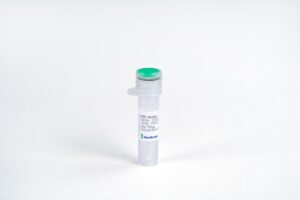
GDNF, Human
$2,018.25 Add to cart View Product DetailsGlial cell line-derived neurotrophic factor (GDNF) is a neurotrophic factor belonging to the TGF-beta super family and is necessary for neuron survival and phenotypic maintenance in the central and peripheral nervous systems. G-DNF has the potential to support the differentiation and survival of many neuron subpopulations, especially dopaminergic neurons and motor neurons, as well as Purkinje cells and sympathetic neurons. Sertoli cells, type 1 astrocytes, Schwann cells, neurons, pinealocytes and skeletal muscle cells are known to express GDNF in human. GDNF has been shown to interact with GFRA2 and GDNF family receptor alpha 1. Mutations in this gene may be associated with Hirschsprung’s disease, Parkinson’s disease and amyotrophic lateral sclerosis (ALS).The recombinant human G-DNF expressed in E.coli is a disulfide-linked homo-dimer, with an apparent molecular weight of 17 kDa.
-

GDNF, Human
$86.25 Add to cart View Product DetailsGlial cell line-derived neurotrophic factor (GDNF) is a neurotrophic factor belonging to the TGF-beta super family and is necessary for neuron survival and phenotypic maintenance in the central and peripheral nervous systems. G-DNF has the potential to support the differentiation and survival of many neuron subpopulations, especially dopaminergic neurons and motor neurons, as well as Purkinje cells and sympathetic neurons. Sertoli cells, type 1 astrocytes, Schwann cells, neurons, pinealocytes and skeletal muscle cells are known to express GDNF in human. GDNF has been shown to interact with GFRA2 and GDNF family receptor alpha 1. Mutations in this gene may be associated with Hirschsprung’s disease, Parkinson’s disease and amyotrophic lateral sclerosis (ALS).The recombinant human G-DNF expressed in E.coli is a disulfide-linked homo-dimer, with an apparent molecular weight of 17 kDa.
-

GDNF, Human
$271.69 Add to cart View Product DetailsGlial cell line-derived neurotrophic factor (GDNF) is a neurotrophic factor belonging to the TGF-beta super family and is necessary for neuron survival and phenotypic maintenance in the central and peripheral nervous systems. G-DNF has the potential to support the differentiation and survival of many neuron subpopulations, especially dopaminergic neurons and motor neurons, as well as Purkinje cells and sympathetic neurons. Sertoli cells, type 1 astrocytes, Schwann cells, neurons, pinealocytes and skeletal muscle cells are known to express GDNF in human. GDNF has been shown to interact with GFRA2 and GDNF family receptor alpha 1. Mutations in this gene may be associated with Hirschsprung’s disease, Parkinson’s disease and amyotrophic lateral sclerosis (ALS).The recombinant human G-DNF expressed in E.coli is a disulfide-linked homo-dimer, with an apparent molecular weight of 17 kDa.
-

GDNF, Mouse
$172.50 Add to cart View Product DetailsGlial-Derived Neurotrophic Factor, also known as GDNF and ATF-1, is a neurotrophic factor belonging to the TGF-beta family. It is expressed in both central nervous system (CNS) and non-CNS tissues. GDNF signals through a receptor system composed of a RET and one of the four GFR alpha receptors. It promotes the survival and differentiation of dopaminergic neurons, and increases their high-affinity dopamine uptake. In a mouse Parkinson’s Disease model, GDNF has been shown to improve bradykinesia, rigidity, and postural instability. GDNF has also been shown to regulate kidney development, spermatogenesis and affect alcohol consumption.
-

GDNF, Mouse
$68.14 Add to cart View Product DetailsGlial-Derived Neurotrophic Factor, also known as GDNF and ATF-1, is a neurotrophic factor belonging to the TGF-beta family. It is expressed in both central nervous system (CNS) and non-CNS tissues. GDNF signals through a receptor system composed of a RET and one of the four GFR alpha receptors. It promotes the survival and differentiation of dopaminergic neurons, and increases their high-affinity dopamine uptake. In a mouse Parkinson’s Disease model, GDNF has been shown to improve bradykinesia, rigidity, and postural instability. GDNF has also been shown to regulate kidney development, spermatogenesis and affect alcohol consumption.
-
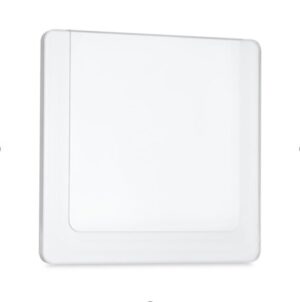
GenBox 10*10 Buffer Dam
$25.88 Add to cart View Product Details10*10 buffer dam for GenBox Mini Electrophoresis Tank. One-piece buffer dam is used when running only one gel.
